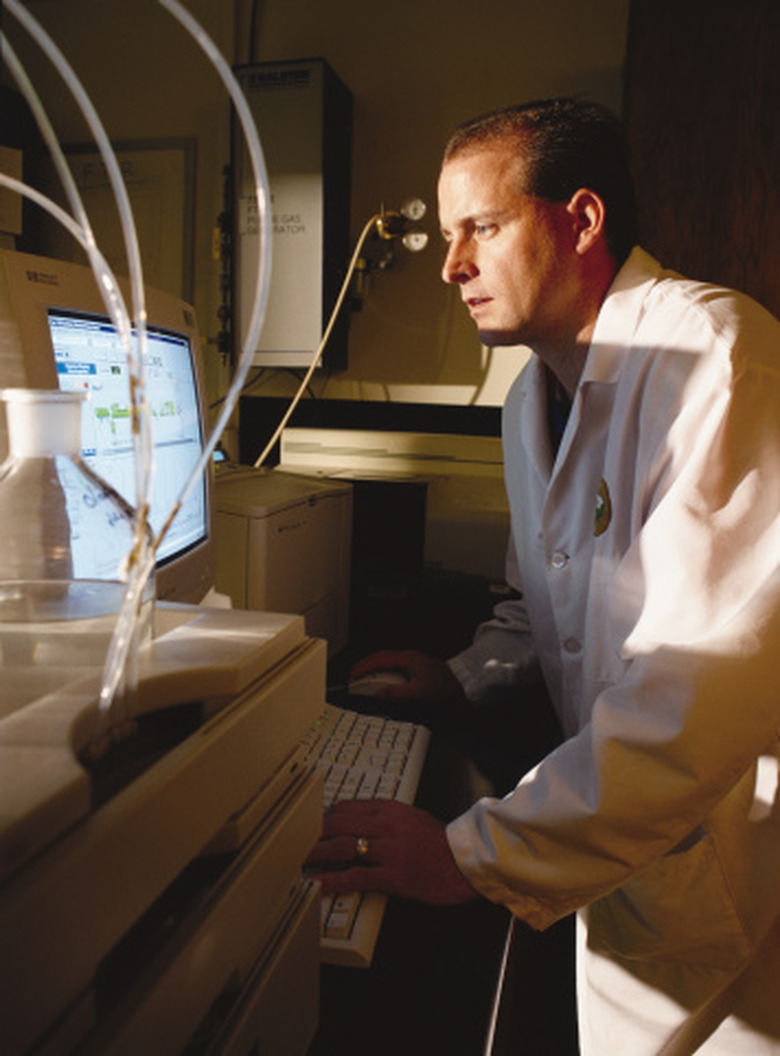How To Calibrate An Infrared Spectrophotometer
As is the case when using any scientific instrument, you need to make sure the instrument is in good working order before using it to analyze a sample. Checking the response of the instrument for a known sample verifies that the instrument is properly calibrated. Spectrophotometers require periodic calibration to ensure correct response of the instrument. Infrared (IR) spectrophotometers use polystyrene as a calibration standard. A scan of the instrument with a piece of polystyrene in the sample holder will verify the presence of peaks seen on the IR spectra and the relative intensity of the peaks.
Step 1
Turn on the spectrophotometer and allow it to warm up for at least 10 minutes. The warm up time is required for the source to stabilize. Without a stable source, you can't rely on the spectra obtained. The analytical signal relies on attenuation of the source radiation by the sample.
Step 2
Run the calibration standard by placing a piece of polystyrene film in the sample holder. Without a test run using a sample of known spectra called a standard, you have no certainty that the spectrophotometer is working correctly.
Step 3
Retrieve the spectra for the polystyrene sample. Compare the spectra with the one in a standard reference of IR spectra. Make sure that all the peaks expected exist on the test spectra. The location of the peaks must line up with the wavelength of absorption.
Step 4
Check the spectra to make sure that the strength of the signal is within 95 percent of maximum for the strongest peak. If the strongest peak in the spectra is more or less than full scale, adjust the attenuation to deliver the correct signal strength.
Step 5
Calibrate the IR spectrophotometer often. A minimum frequency of calibration should include a scan just before and one just after your work for the day.
Things Needed
- Polystyrene film
- Reference spectra of polystyrene
Cite This Article
MLA
Lancaster, Sean. "How To Calibrate An Infrared Spectrophotometer" sciencing.com, https://www.sciencing.com/calibrate-infrared-spectrophotometer-8685224/. 24 April 2017.
APA
Lancaster, Sean. (2017, April 24). How To Calibrate An Infrared Spectrophotometer. sciencing.com. Retrieved from https://www.sciencing.com/calibrate-infrared-spectrophotometer-8685224/
Chicago
Lancaster, Sean. How To Calibrate An Infrared Spectrophotometer last modified March 24, 2022. https://www.sciencing.com/calibrate-infrared-spectrophotometer-8685224/
